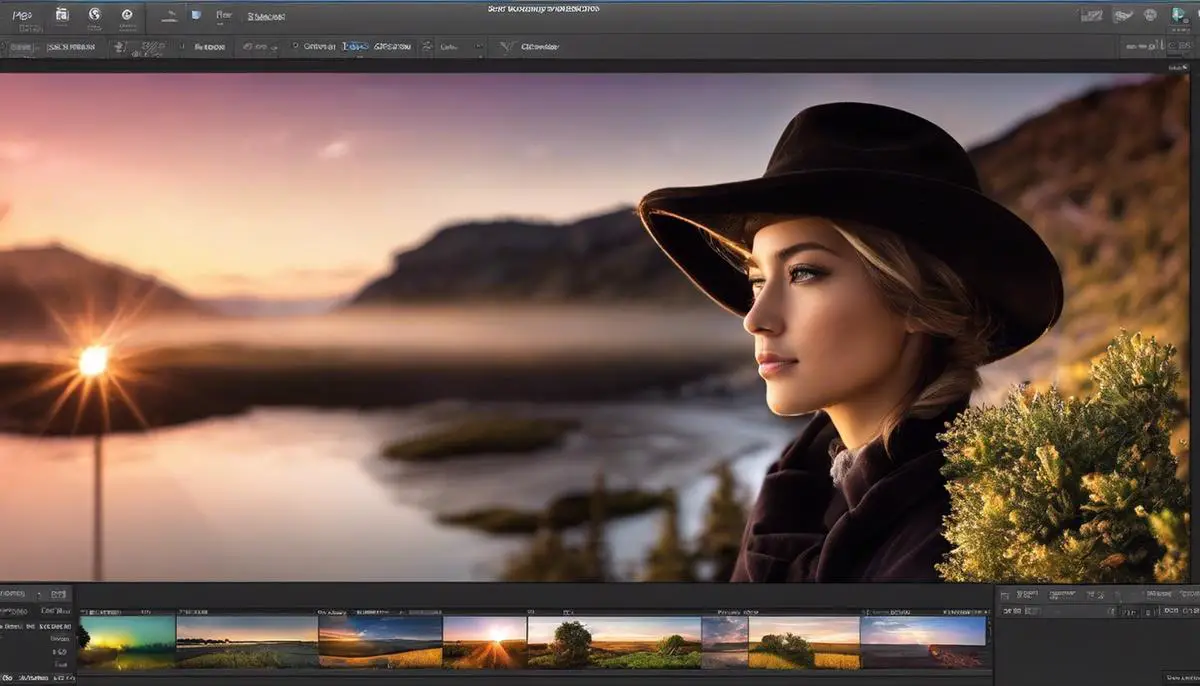In an era where visual content plays a dominant role in digital communication and marketing, possessing nimble image-editing skills is a resourceful asset for professionals across diverse domains. This discourse aims to explore the fundamentals and advanced techniques of modifying images, while shedding light on the use of popular editing tools such as Adobe Photoshop, GIMP, Pixlr and more. Through this exploration, readers will gain a comprehensive understanding of integral methods such as cropping, resizing, applying filters, and correcting colors. Furthermore, we will navigate the complex territory of advanced image modification strategies, including layering, masking, the addition of text, and the use of graphic overlays, thereby equipping you with the skillset to swiftly and efficiently modify images.
Contents
Understanding Image Editing Tools
The Essential Image Editing Tools and Their Functions
In the world of today, the importance of image editing cannot be overstated. Whether it’s social media, blog posts, or professional portfolios, we use images to tell stories, express ideas, transmit information, or advocate causes. The process of transforming these images into the perfect visual representation requires the use of image editing tools. This article provides a rundown of the essential image editing tools and how they function.
- Cropping and Resizing
- Brightness/Contrast Adjustments
- Color Correction
- Noise Reduction
- Healing and Clone Stamping
- Filters and Effects
- Masking and Layering
- Text Tools
Cropping is an absolute necessity when it comes to image editing. It allows us to remove unnecessary portions of the image, focus on particular areas, or change the shape of the image altogether. Resizing, on the other hand, adjusts the dimensions of the image, allowing it to fit into the required space while maintaining the aspect ratio. Most editing software, including Adobe Photoshop and GIMP, come equipped with these fundamental tools.
Another pair of tools that “come standard” are brightness and contrast adjustments. Brightness controls the overall lightness or darkness of the image, while contrast affects the difference between light and dark areas. Mastering these features can significantly improve the mood, depth, and visual appeal of an image.
Color correction comes in handy when an image appears unnaturally colored due to lighting conditions during the shooting or characteristics of the camera used. Tools like hue, saturation, and vibrance allow users to adjust the overall color, intensity, and richness of colors in an image.
Images often contain ‘noise’, random variations of brightness or color information, which can ruin an image’s clarity. Noise reduction tools, found under various names across different software, help in reducing these disturbances and improving an image’s overall quality.
Scratches, dust, or any other unwanted elements can significantly detract from the quality of an image. The Healing tool (Spot Healing Brush in Adobe Photoshop) and the Clone Stamp tool help in removing these blemish areas, giving your image a clean look.
Most image editing software offer numerous built-in filters and effects that can instantly transform the aesthetic of an image. These tools, although simple, can save a great deal of time and effort, and when used correctly, can yield highly creative results.
Perhaps the most versatile features of sophisticated image editing tools, masking and layering offer unparalleled control over different aspects of an image. They let you isolate and modify individual sections without affecting the rest of the image.
Whether it’s adding captions, labels, or creating graphic design pieces, text tools serve numerous functions in image editing. They enable users to add, format, and manipulate text within images efficiently.
Understanding these essential tools and leveraging them to your advantage is fundamental in the realm of image editing. A tool, after all, is only as good as the skillset of the individual using it. Whether you’re an amateur editing personal pictures or a professional crafting stunning images, incorporating these tools will help you achieve your image’s desired aesthetic and message.

Basics of Image Manipulation
Exploring Further into the Realm of Image Editing: Essential Techniques for Enhanced Manipulation
Having a firm grip on the basics of image editing unlocks a world of creativity, offering unparalleled control over the perceived reality in digital imagery. In continuation from previous tutorials, let’s explore additional yet pivotal techniques that facilitate complex image modifications, allowing for refined aesthetic balancing and narration.
One technique rising to prominence is dodge and burn. Born from the traditional realm of film photography, dodge and burn tools offer control over the luminosity of selected areas for visual depth enhancement. Dodge brightens specific elements, whereas burn darkens them. This interplay between light and dark just brings out the magic in an image, adding a captivating three-dimensional feel.
Next, there’s the clever use of the blending modes. Have you ever layered images, hoping to achieve a certain ethereal effect, but only to find out that they cover each other? Well, blending modes save the day, determining how two layers interact visually. Set the right blending mode, and watch your creative vision come alive.
Morphing into the abstract realm of image editing, channel mixing offers fascinating results. Primarily used to create high-contrast black and white images, color images can also benefit from channel mixing manipulation. By tweaking the RGB (red, green, blue) values, it offers new dimensions in hue adjustments and seamless color replacements.
If you’ve ever been frustrated trying to select complex elements like hair, fret no more. Edge refinement techniques are here to offer an improved solution. Making intricate areas easier to isolate, adjustments to subtle edges and hard lines become a breeze, allowing for more detailed and accurate selection manipulation.
Finally, taking a step away from realism, distortion and warp tools open wide avenues for artistic and surrealistic creations. Disrupting the natural proportions, these tools manipulate the ‘structure’ in an image, stretching, twisting, and playing with perspectives, giving you the reigns to the laws of physics within your image.
In conclusion, image editing is much more than enhancing a photo’s overall appeal. It’s about telling engaging visual stories, illustrating intricate narratives, and breathing life into every element within a frame. So, jump ahead, experiment, and take your image manipulation skills onto a whole new canvas.

Advanced Image Modification Techniques
Running the entire gamut of image modification, it’s time to embark on a deep dive into the more advanced granular level. Leveraging the sophisticated techniques similar to the ones professionals rely on will provide significant enhancements to your skills. Let’s delve right in.
Firstly, it’s about comprehending the profound implications of Sharpening and Detail Enhancement. Extending beyond the traditional way of adding crispness, sharpening can be utilized to emphasize textures and patterns. Detail enhancement plugins like Topaz Detail go a step further, enhancing minute details without introducing unwanted artifacts. To master this, steer clear of over-sharpening, as it can make the image appear unnatural.
Also, it pays to fully grasp Advanced Color Enhancement techniques. Techniques like selective color, split toning, and duo-toning can render your photos with a unique color palette and narrative. For those shooting in RAW, HSL (Hue, Saturation, and Luminance) sliders offer precise control over color adjustment, thereby offering endless creative possibilities.
Exploring Panorama Stitching adds diversity to your skills. Adept utilization of software like Adobe Lightroom and PTGui can convert individual photographs into immersive panoramas. Playing around with different fields of view and projection methods can help you deliver strikingly dramatic results.
Another remarkable tool lying right at your fingertips is the 3D Transform Function. The 3D functions in software like Photoshop let you place your object or image in a 3D space. Various elements, including lighting, size, and angle, can be adjusted to create a realistic perspective. It may feel slightly intimidating at first, but yields fabulous, unmatched results once you’ve got the hang of it.
Moreover, there’s a suite of AI-powered editing features embedded within photo-editing software. From cropping suggestions based on the rule of thirds to automatic sky replacement, these AI-powered tools can drastically enhance your workflow and image quality, offering creative suggestions and swift implementation.
Last but not least, to really skill up high level editing, one needs Absolute Clarity on RAW Conversion. Working with RAW files provides the unprocessed image data directly from the camera sensor. This means more tonal range, broader color space, and greater flexibility in post-processing. Tweaking things like exposure compensation, white balance, or colors pre-conversion allows for non-destructive editing that maximizes image quality.
With these advanced techniques added to your toolkit, it is surprising what can be brought to life. As with any skill, practice makes perfect. The emphasis here is on bettering your perspective, understanding advanced features, pushing the technology envelope to its limits, and ultimately becoming a more comprehensive, proficient, and versatile image editor. Navigate through these techniques, get your hands dirty, and surprise yourself with the possibilities they bring.

By acquiring these skills, professionals can confidently delve into the world of image editing and manipulation, leveraging their expertise for a hill of tasks from simple daily image enhancements to complex graphics creation. The tools and techniques discussed form the bedrock of proficient image editing, providing a firm foundation upon which more complex skills can be built. Undoubtedly, mastering these image modification techniques not only enriches your role as a professional but also enhances the quality, creativity, and impact of the visual content you produce, setting a gold standard in your sphere of influence.

Emad Morpheus is a tech enthusiast with a unique flair for AI and art. Backed by a Computer Science background, he dove into the captivating world of AI-driven image generation five years ago. Since then, he has been honing his skills and sharing his insights on AI art creation through his blog posts. Outside his tech-art sphere, Emad enjoys photography, hiking, and piano.
